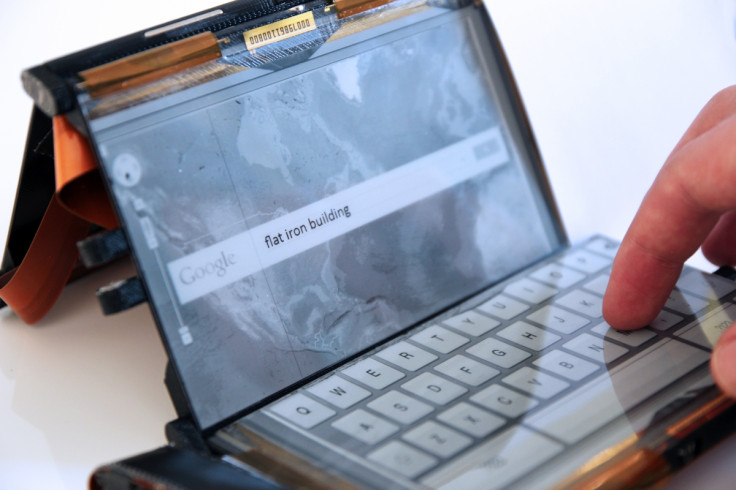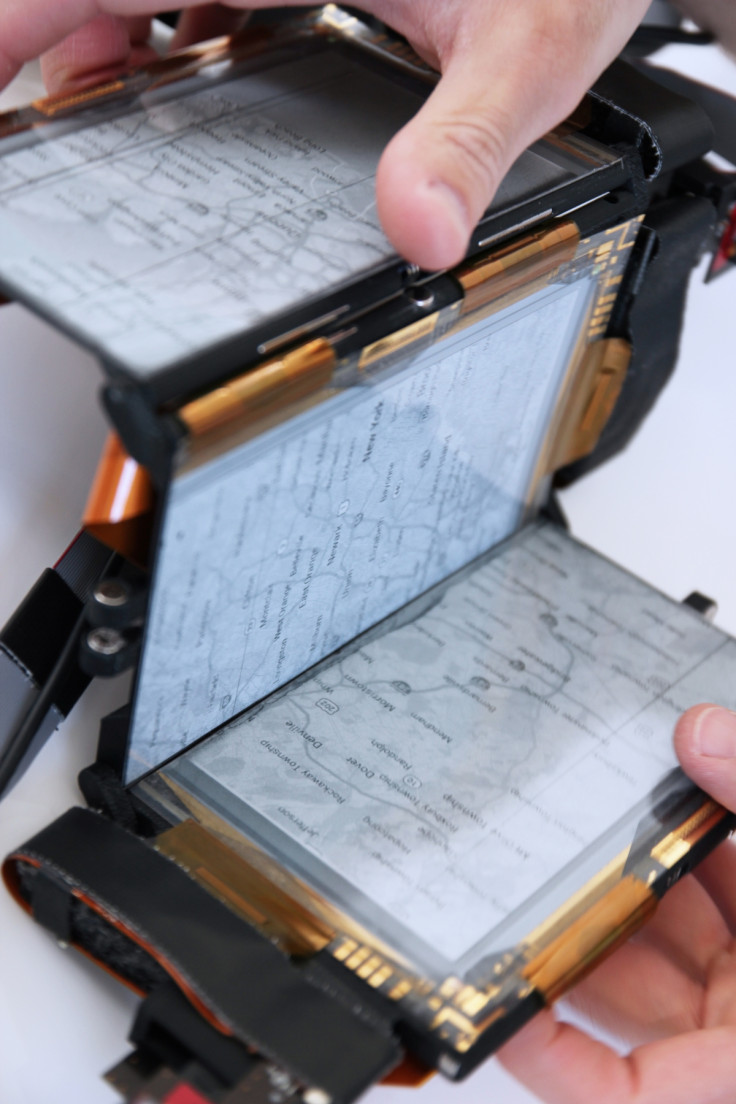PaperFold - the Multi-Screen Foldable Smartphone

Researchers have developed a prototype for a shape-shifting smartphone that is capable of transforming its multiple flexible screens in order to vastly improve the functionality of a traditional smartphone.
The team from the Human Media Lab (HML) at Canada's Queen's University took inspiration from paper to develop the PaperFold smartphone, a three-screen device that adapts into different configurations depending on the function required.
"The development of electronic paper computers that can adopt similar qualities to paper has been an enduring research goal for our team," said Dr Roel Vertegaal, director of the Human Media Lab.
"Books use folding as both a navigational and space saving technique, and paper maps have malleable display sizes. The PaperFold smartphone adopts folding techniques that makes paper so versatile, and employs them to change views or functionality of a smartphone, as well as alter its screen real estate in a flexible manner."
A malleable mobile device

PaperFold is capable of automatically recognising its shape and can change its graphics depending on its form configuration.
HML gives examples of folding the device into an ultra notebook form to open up a keyboard, as well as flattening it to expand a map across multiple screens.
"It allows multiple device form factors, providing support for mobile tasks that require large screen real estate or keyboards on demand, while retaining an ultra-compact, ultra-thin and lightweight form factor," Vertegaal explained.
In addition to folding, the screens are able to detach from one another in order to completely reconfigure the shape and function of the device.
Even smarter phones
Other smartphone concepts have emerged in recent months, heralding a departure from the current trend of single-screen devices.
One such concept is the Seed Phone. Developed by a computer engineering student from the University of Cape Town, Seed Phone is capable of converging multiple tablet and computer devices using a single smartphone.
In January Google is set to launch the first ever build-it-yourself modular smartphone through Project Ara.
The so-called "Gray Phone" allows users to build an open hardware ecosystem" that can be customised with different components, such as cameras, speakers and screens.
If successful, any one of these devices could signal a fundamental change in the way people use smartphones.
© Copyright IBTimes 2024. All rights reserved.






